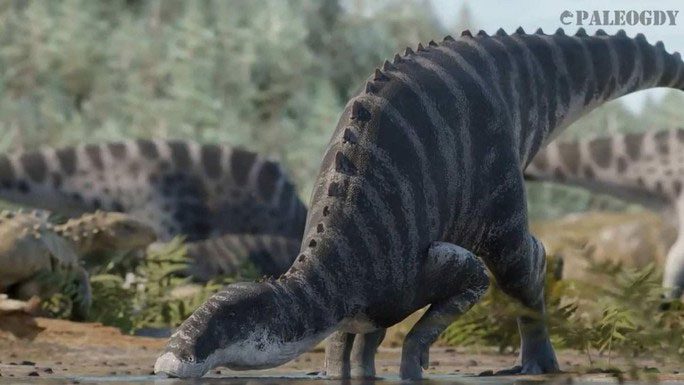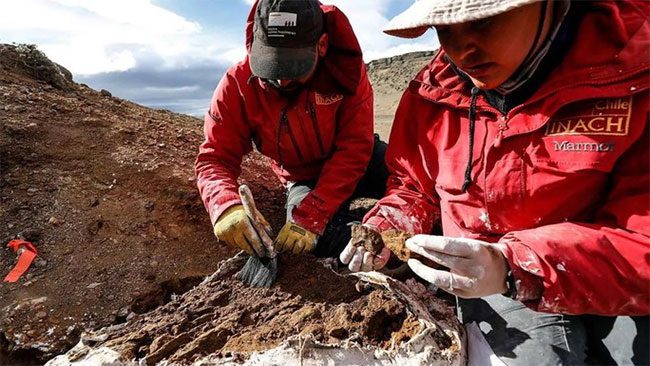Researchers have identified a completely new species of dinosaur, named Gonkoken nanoi, based on fossil remains dating back approximately 72 million years, recently excavated in Chile.
According to Live Science, this creature is categorized as a “lost link” in the dinosaur family tree, appearing as if it fell from the sky, with no clear relatives or descendants.

Graphic illustration depicting the “portrait” of the new dinosaur species – (Image: UNIVERSITY OF CHILE).
It is known to belong to a group of herbivorous dinosaurs referred to as “duck-billed dinosaurs” due to its flat mouth resembling a duck’s bill.
The name Gonkoken nanoi, rather than indicating a close relationship with any nearby species, simply means “like a waterfowl.”
Fifty fossil pieces belonging to three individuals of Gonkoken nanoi were excavated from the Chilean Patagonia dinosaur site, known for revealing many other ancient creatures.

Scientists excavating fossil remains – (Image: UNIVERSITY OF CHILE).
The fossilized remains, including teeth, vertebrae, skull bones, jaw fragments, limb bones, and ribs, have allowed scientists from the University of Chile to reconstruct a fairly clear image of a peculiar reptile measuring up to 4 meters long and weighing around 1 ton.
Despite this, the publication in Science Advances acknowledges that these findings are entirely “disconnected” in the fossil record.
They suspect that Gonkoken nanoi, with its bizarre appearance, represents a fleeting evolutionary link between older and “younger” dinosaur species, but do not consider it an ancestor of other duck-billed dinosaurs in the Southern Hemisphere.
The prevailing hypothesis suggests that it originated in the Northern Hemisphere, subsequently migrating through a now-defunct “land bridge,” leading to its sudden presence in the Southern Hemisphere without close relatives.
They also believe that it spread its species as far as Antarctica and survived until the impact of the Chicxulub meteor struck Earth 66 million years ago, which led to the extinction of all dinosaurs.


















































